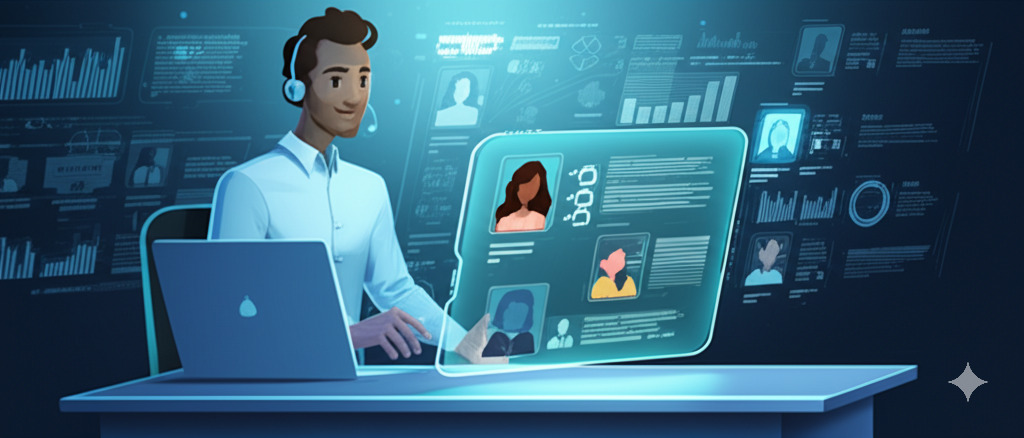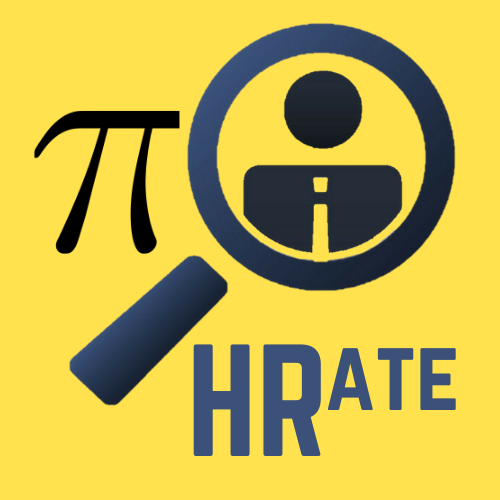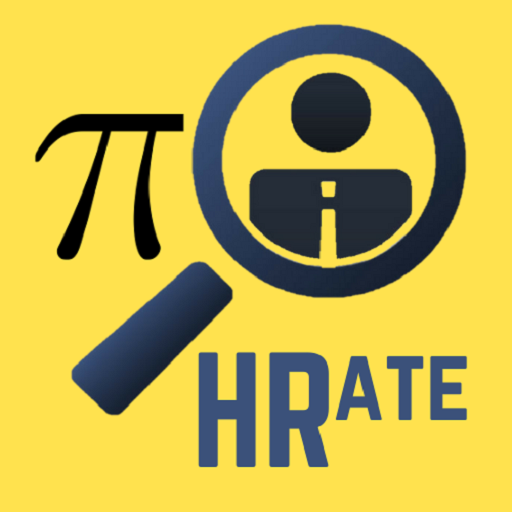Revolutionizing Recruitment: A Comprehensive Guide to Automating the Hiring Process

The modern talent landscape presents a formidable challenge for organizations worldwide. A confluence of factors – persistent talent shortages, escalating demands on HR teams, tightening budgets, and increasingly discerning candidates – has created a perfect storm, pushing traditional recruitment methods to their breaking point. Statistics paint a stark picture: 61% of talent management leaders feel overwhelmed, 8 in 10 board directors view talent shortages as a primary business risk, and projections warn of 85 million unfilled jobs by 2030, potentially costing trillions in lost productivity. Add to this the fact that 62% of candidates will only apply if a job meets most of their expectations, and the mandate becomes clear: organizations must hire top talent from a shrinking pool, faster, and with fewer resources.
In this high-stakes environment, automation and Artificial Intelligence (AI) have emerged not just as helpful tools, but as strategic imperatives. AI-powered hiring technologies promise staggering efficiency gains, with potential time-to-hire reductions of up to 89.6%. They offer pathways to previously untapped talent pools and streamline laborious sourcing efforts. Yet, the true potential of hiring automation extends beyond mere speed and efficiency. When implemented thoughtfully, these technologies can fundamentally reshape the recruitment function, enabling HR teams to create more personalized, human-centric candidate experiences that attract, engage, and ultimately retain the best talent.
This comprehensive guide delves into the world of hiring automation. We will explore the compelling benefits driving its adoption, outline a practical step-by-step plan for implementation, and critically examine the potential pitfalls and considerations essential for navigating this transformation successfully. The goal is not simply to automate tasks, but to strategically leverage technology to build a more effective, efficient, and equitable hiring process fit for the future.
The Imperative for Change: Why Automate Hiring Now?
The pressure to automate isn’t arbitrary; it’s a direct response to undeniable market forces and internal constraints:
- The Widening Talent Gap: As noted, skill shortages are rampant across industries. Relying solely on active job applicants responding to job boards is no longer sufficient. Automation enables proactive sourcing from passive candidate pools, dramatically expanding reach.
- Resource Constraints: With 78% of recruiting leaders facing stagnant or shrinking budgets, doing “more with less” is the new reality. Automation tackles time-consuming administrative tasks, freeing up recruiters for high-value activities like candidate engagement, strategy development, and relationship building.
- The Need for Speed: Top candidates are often off the market in days, not weeks. Lengthy screening processes, scheduling delays, and slow communication mean losing out on the best talent to faster competitors. Automation compresses timelines at critical stages.
- Elevated Candidate Expectations: Today’s candidates expect seamless, transparent, and responsive experiences, akin to consumer interactions. Clunky application processes, poor communication (“ghosting”), and delays create negative brand perceptions and increase candidate drop-off rates. Automation, used wisely, can enhance communication and transparency.
- Data-Driven Decision Making: Gut feelings are notoriously unreliable and prone to bias. Automation tools can introduce objective data points through standardized assessments and predictive analytics, leading to more accurate hiring decisions and reduced early turnover.
- Compliance and Fairness Demands: Regulatory landscapes (like EEOC, GDPR, CCPA) and a growing focus on Diversity, Equity, and Inclusion (DEI) require rigorous, standardized, and auditable hiring processes. Automation helps enforce consistency and provides clear documentation trails.
Ignoring these pressures means falling behind competitors, struggling to fill critical roles, damaging the employer brand, and potentially facing legal risks. Automation offers a viable path forward.
Unlocking Efficiency and Impact: The Core Benefits of Hiring Automation
Implementing automation strategically yields significant advantages across the recruitment lifecycle:
1. Drastically Reduce Time-to-Hire
This is often the most immediate and measurable benefit. Automation accelerates multiple stages:
- Instant Resume Screening: AI can parse thousands of applications in seconds, filtering candidates based on predefined skills, experience, keywords, and certifications, far faster than manual review.
- Automated Shortlisting: Based on screening results, systems can automatically advance qualified candidates to the next stage.
- Streamlined Interview Scheduling: Self-scheduling tools eliminate endless email chains, allowing candidates to book slots directly into integrated recruiter and hiring manager calendars. Automated reminders reduce no-shows.
The cumulative effect can, as studies suggest, cut overall hiring timelines by nearly 90% in some cases, preventing top candidates from accepting competing offers.
2. Expand and Diversify Talent Pools
Move beyond the limitations of active job seekers:
- AI-Powered Sourcing: Tools actively scan professional networks (like LinkedIn), niche job boards, online communities, and internal databases (including past applicants) to identify passive candidates who match role requirements but aren’t actively looking.
- Talent Rediscovery: Automation can resurface previous applicants (silver medalists) who may have gained relevant experience and are now a strong fit, maximizing the value of your existing ATS data.
- Automated Outreach: Personalized outreach messages, tailored using AI based on candidate profiles, can be sent automatically at scale, significantly increasing engagement and response rates compared to generic templates.
3. Improve and Personalize Candidate Experience
Contrary to fears of dehumanization, automation can foster a more human-centric experience when used correctly:
- Consistent Communication: Automated workflows ensure candidates receive timely acknowledgments, status updates, interview confirmations, reminders, and rejection notices, reducing the frustration of being left in the dark.
- Personalization at Scale: While automated, communications can be personalized with candidate names, specific job details, and relevant next steps.
- 24/7 Support via Chatbots: AI-powered chatbots can instantly answer common candidate questions about the role, salary range, benefits, company culture, or application status, providing immediate support outside business hours.
- Self-Service Portals: Candidates can track their application progress independently, increasing transparency and reducing reliance on recruiter availability for simple updates.
4. Enhance Hiring Accuracy and Quality-of-Hire
Move beyond subjective impressions towards data-informed decisions:
- Standardized Assessments: Utilize validated skills tests (coding challenges, writing samples), cognitive assessments, or behavioral questionnaires tailored to the role. Automation can help administer and score these consistently.
- AI-Informed Insights: Predictive analytics can analyze patterns in past hiring data (correlating candidate attributes with performance and retention) to identify indicators of future success for specific roles.
- Structured Video Interviews: Some platforms use AI to analyze responses in pre-recorded video interviews for key competencies, ensuring consistent evaluation criteria are applied, though human oversight remains crucial here.
By standardizing criteria and leveraging data, organizations reduce bias and improve the likelihood of selecting candidates truly aligned with job requirements and company culture, leading to better performance and lower turnover.
5. Ensure Compliance and Promote Fair Hiring Practices
Embed fairness and meet regulatory requirements:
- Standardized Screening Criteria: Automation ensures every applicant is evaluated against the same role-specific, objective criteria, reducing unconscious bias in initial screening.
- Bias Detection in Job Descriptions: AI tools can scan job postings for potentially biased language (gendered terms, exclusionary jargon) before publication.
- Consistent Evaluation Processes: Standardized scorecards and structured interview guides, often integrated into automated workflows, promote equitable comparisons between candidates.
- Automated Audit Trails: Systems automatically log every action taken during the hiring process (screening decisions, communication timestamps, assessment results), providing a clear, documented trail for compliance audits (EEOC, GDPR, CCPA, etc.).

Building Your Automation Roadmap: A Practical 6-Step Implementation Plan
Recognizing the benefits is easy; implementing automation effectively requires a strategic approach. Avoid a scattergun approach; instead, start small, focus on high-impact areas, and scale thoughtfully.
Step 1: Diagnose Before Prescribing: Identifying Bottlenecks
Before implementing any tool, deeply understand your current process and pinpoint the real pain points.
- Map the Workflow: Visually chart every step of your current hiring process, from requisition approval to offer acceptance.
- Gather Stakeholder Input: Interview recruiters, hiring managers, and even recent hires about their experiences. Where do delays occur? What tasks are most frustrating or time-consuming?
- Analyze Hiring Data: Examine metrics like time-to-fill by stage, candidate drop-off rates at each step, source effectiveness, and offer acceptance rates. Look for patterns indicating bottlenecks.
- Prioritize Opportunities: Identify the 1-3 critical steps where automation could deliver the most significant immediate value (e.g., high-volume resume screening, interview scheduling chaos).
Step 2: Automating the Top of the Funnel: Screening & Sourcing
Focus on removing manual effort at the initial, high-volume stages.
- Define Clear Screening Criteria: Work with hiring managers to establish non-negotiable “must-have” skills, experiences, certifications, and keywords for AI screening tools. Be specific and objective.
- Implement AI Screening Tools: Choose tools that integrate with your Applicant Tracking System (ATS) and allow customization of screening parameters. Ensure recruiters understand how the tool works.
- Leverage AI Sourcing Platforms: Explore tools that search beyond active applicants. Configure them based on ideal candidate profiles for key roles to uncover passive talent.
- Ensure Seamless ATS Integration: The goal is efficiency. Screened and sourced candidates should flow directly into your ATS pipeline, tagged appropriately, so recruiters can immediately focus on qualified leads.
Step 3: Eliminating the Scheduling Nightmare: Self-Scheduling Interviews
Address one of the most common and frustrating delays.
- Integrate Calendars: Select a scheduling tool that syncs seamlessly in real-time with recruiters’ and hiring managers’ work calendars (Outlook, Google Calendar, etc.).
- Configure Scheduling Parameters: Set rules like minimum notice periods, buffer times between interviews, maximum interviews per day, and available time blocks. Define different parameters for phone screens vs. panel interviews.
- Enable Group Scheduling (if applicable): For high-volume roles, consider tools allowing multiple candidates to book slots for group interview sessions.
- Automate Confirmations & Reminders: Set up automated email and SMS messages confirming booked interviews and sending reminders to both candidates and interviewers to drastically reduce no-shows.
Step 4: Keeping Candidates Warm: Automating Communication Strategically
Maintain engagement without overwhelming recruiters.
- Map Communication Touchpoints: Identify key moments for automated updates: application received, moved to screening, interview scheduled, post-interview update, final decision.
- Develop Personalized Templates: Create template sequences for common communications, using merge tags (candidate name, job title) for personalization. Ensure the tone is professional yet human.
- Implement AI Chatbots (for FAQs): Deploy chatbots on your career site or application portal to handle frequently asked questions instantly, freeing up recruiters from repetitive inquiries.
- Utilize Multi-Channel Communication: Leverage email for formal updates and confirmations, and potentially SMS for time-sensitive reminders or quick check-ins (always obtain consent for SMS).
Step 5: Driving Objectivity: Standardizing Assessments & Decision-Making
Ensure consistency, fairness, and data-informed choices.
- Select Role-Appropriate Assessment Tools: Choose validated assessments relevant to the job: coding tests for engineers, portfolio reviews for designers, situational judgment tests for customer service, cognitive tests for analytical roles. Avoid generic, one-size-fits-all approaches.
- Develop Structured Interview Scorecards: Create standardized scorecards within your ATS or automation platform, outlining key competencies and behavioral indicators for each role. Ensure all interviewers use the same scorecard.
- Automate Scoring (Where Applicable): For objective assessments (e.g., multiple-choice tests, coding challenges), leverage automated scoring to provide quick, unbiased results to the hiring team.
- Integrate Data for Insights: Ensure assessment results and scorecard data are easily accessible alongside resumes and interview notes to provide a holistic candidate view for decision-making.
Step 6: The Continuous Improvement Loop: Monitoring, Measuring & Optimizing
Automation isn’t a “set it and forget it” solution. Ongoing refinement is key.
- Track Key Performance Indicators (KPIs): Monitor metrics like time-to-hire (overall and by stage), cost-per-hire, source-of-hire quality, candidate satisfaction (NPS or specific survey scores), assessment pass rates, diversity metrics, and offer acceptance rates.
- Gather Internal Feedback: Regularly solicit feedback from recruiters and hiring managers on the usability and effectiveness of the automation tools and workflows. What’s working well? What’s causing friction?
- Collect Candidate Feedback: Use automated post-interview or post-application surveys to understand the candidate’s perception of the automated process.
- Analyze and Refine: Use data and feedback to identify areas for improvement. A/B test different communication messages, adjust screening criteria, refine chatbot responses, or optimize scheduling parameters based on insights.
Navigating the Nuances: Critical Considerations and Pitfalls to Avoid
While powerful, automation tools are not magic wands. Proactive management of potential challenges is crucial for successful and ethical implementation.
1. The Specter of Bias: Auditing AI Diligently
AI learns from data, and if historical hiring data reflects past biases (conscious or unconscious), AI can perpetuate or even amplify them.
- Regular Audits: Periodically audit AI screening and assessment tools for adverse impact on protected groups. Analyze pass rates and hiring recommendations across demographics.
- Diverse Training Data: Question vendors about the diversity of the datasets used to train their AI models.
- Explainable AI (XAI): Favor tools that offer transparency into why a certain recommendation was made (explainability), allowing recruiters to understand and potentially override flawed suggestions.
- Human Oversight: Never fully abdicate decision-making to AI. Use it as a tool to augment, not replace, human judgment, especially for final hiring decisions.
2. The Human Element: Balancing Automation and Personal Touch
Over-automation can lead to a cold, impersonal experience that alienates candidates.
- Map Critical Touchpoints: Identify stages where human interaction is most impactful (e.g., initial recruiter outreach for passive candidates, complex query handling, interview debriefs, offer negotiation). Ensure recruiters are enabled and expected to engage personally at these points.
- Personalize Automated Messages: Go beyond just the name; reference specific aspects of their profile or the role where possible. Ensure the tone reflects your employer brand.
- Train Recruiters on Empathetic Engagement: Equip recruiters with the skills to build rapport and handle sensitive conversations effectively, complementing the efficiency gained from automation.
3. The Legal Landscape: Maintaining Compliance & Data Privacy
Using AI and handling candidate data introduces significant compliance obligations.
- Understand Regulations: Be fully aware of requirements under GDPR (Europe), CCPA (California), EEOC guidelines (US), and other relevant local laws regarding data consent, usage transparency, data retention, and anti-discrimination.
- Vendor Due Diligence: Ensure chosen AI tools have built-in compliance features and adhere to data privacy best practices. Review their data security protocols.
- Transparency and Consent: Clearly disclose to candidates when and how AI is being used in the hiring process. Obtain explicit consent for data processing and automated decision-making where required. Offer opt-outs or human review options.
- Data Security: Implement robust security measures to protect sensitive candidate data stored and processed by automation systems. Limit access to authorized personnel.
4. Winning Hearts and Minds: Overcoming Employee Resistance
Recruiters or hiring managers may fear automation will replace their jobs or distrust AI recommendations.
- Clear Communication Strategy: Consistently message that automation is a tool to augment their capabilities, reduce administrative burden, and free them for more strategic, human-centric work – not replace them.
- Highlight Benefits for Them: Demonstrate tangible benefits like time saved, access to better candidates, and reduced manual tasks.
- Provide Comprehensive Training: Equip users with the knowledge and skills to use the new tools effectively and understand their outputs.
- Phased Rollout & Pilot Programs: Introduce automation gradually, starting with pilot groups or specific process steps, allowing teams to adapt and provide feedback before a full-scale launch.
- Involve Users in Selection/Configuration: Give recruiters and hiring managers a voice in choosing and configuring tools to foster ownership.
5. The Integration Puzzle: Ensuring Seamless Tech Stack Operation
Disconnected tools create new inefficiencies and data silos.
- Prioritize Integration Capabilities: When selecting tools, prioritize those with robust APIs and proven integrations with your existing ATS, HRIS, and calendar systems.
- Thorough Testing: Conduct rigorous testing before full rollout to identify and resolve technical glitches, data syncing issues, or workflow breakdowns.
- Map Data Flows: Clearly understand how data moves between different systems in your automated workflow to ensure accuracy and consistency.
- Ongoing Vendor Support: Choose vendors with strong customer support and a commitment to maintaining integrations as systems evolve.
6. Closing the Loop: The Power of Feedback
The ultimate goal is a better process for everyone involved.
- Systematic Feedback Collection: Implement regular, automated surveys for candidates (post-application, post-interview, post-hire) and new hires (during onboarding) specifically asking about their experience with the automated parts of the process.
- Analyze Satisfaction Scores: Monitor candidate Net Promoter Score (cNPS) or satisfaction ratings related to communication, scheduling, and overall process ease.
- Act on Insights: Don’t just collect feedback; analyze it for trends and actionable insights. Use it to refine workflows, improve communication templates, adjust chatbot logic, or identify areas needing more human intervention.
Conclusion: Architecting the Future of Talent Acquisition
The challenges facing recruitment are undeniable, but so are the opportunities presented by automation and AI. Moving beyond outdated manual processes is no longer optional for organizations serious about attracting and retaining top talent. However, success hinges on a strategic, thoughtful, and human-centered approach.
The journey begins not with technology, but with strategy – understanding your unique bottlenecks and objectives. The goal is to use AI and automation to streamline and augment, automating repetitive, time-consuming tasks to free human recruiters for the complex, relationship-driven aspects of their roles where they add the most value. Crucially, the candidate experience must remain paramount; automation should enhance communication and transparency, balanced carefully with personalized human interaction at critical moments.
Furthermore, the implementation must be underpinned by a steadfast commitment to fairness, ethics, and compliance. Regularly auditing tools for bias, ensuring data privacy, and maintaining transparency are non-negotiable. Finally, recognize that automation is not a one-time project but an ongoing process of monitoring, measuring, gathering feedback, and continuously refining workflows to ensure they deliver tangible results aligned with evolving business needs.
By embracing automation strategically and responsibly, organizations can transform their hiring function from a reactive, administrative necessity into a proactive, data-driven engine for acquiring the talent needed to thrive in the dynamic landscape of 2025 and beyond. The future of recruitment is here; the time to architect it is now.



